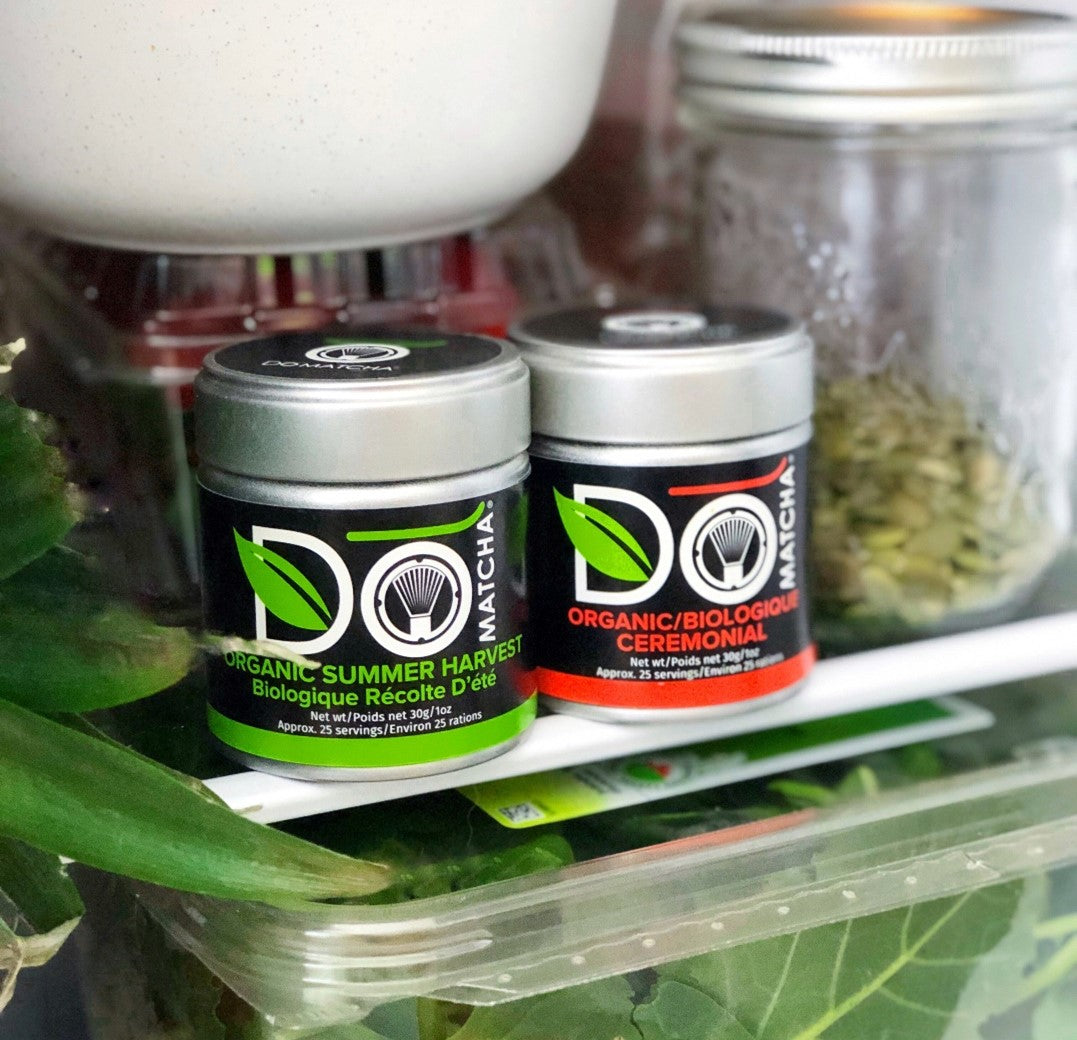
Best Practices for Storing Matcha
Share
When it comes to matcha, the fresher it is, the better it tastes. Matcha is relatively sensitive to environmental factors like humidity, moisture, and temperature. To keep matcha in peak condition, it needs to first, have a secure packaging design. Once it arrives at your home and is opened, there are a few simple ways to keep your matcha fresh and clump free. In this article, we’ll go over the best practices for storing matcha.
What is the Shelf Life of Matcha?
We recommend for best freshness that opened matcha is consumed within 6 months. Otherwise, the color of the matcha may oxidize and turn slightly brown. This will impact the flavour and aroma of the matcha as well.
Matcha that has not been opened has a shelf life of approximately two years. This depends on packaging and manufacturing practices.
Why Packaging is Important for Matcha
Matcha tea undergoes quite the extensive journey before arriving on your doorstep. Preserving the freshness of the matcha, to as close as the day it was grinded, requires smart packaging. Matcha is a raw food product, which means it needs to be packaged properly to preserve its nutritional values. Matcha oxidizes when exposed to light, heat, and air.
First, let’s discuss the outer barrier- the tin matcha comes in. DōMatcha® uses a tin made from steel. The great thing about steel is that it’s easy to recycle and reuse. Steel packaging offers 100% barrier protection against light, water, and air, thus prolonging the shelf life of a food product significantly. It’s also the most tamper resistant food packaging option available.
To add another layer of protection, our matcha powder is enclosed in a food safe bag that goes inside the tin. Inside the food safe bag, there’s an oxygen absorber which creates an oxygen free environment. The primary concern of exposing raw food to oxygen is the growth of mold. Oxygen absorbers help preserve the taste and freshness of food.
The only part of the tin that contains aluminum is the peel-off lid, and this is only because there’s currently no better technology on the market. For safety reasons, DōMatcha® is packed inside of a food safe bag to avoid direct contact with the aluminum lid. The packaging process DōMatcha® uses is more labor intensive and costly. We suggest keeping our matcha inside the food safe bag and inside the tin. However, after the aluminum lid is removed, this is no longer as important and matcha could be kept inside the tin. The food safe bag helps to keep matcha fresher longer and odor free from other foods in the fridge.
How Do I Store Matcha at Home?
The best place to store opened matcha is in the fridge, in a separate compartment away from other food items. This will prevent your matcha from absorbing the smell and flavours from other foods. You should also keep the oxygen absorber in the bag while you’re going through your supply. Matcha needs to be kept at a relatively cool temperature to preserve its freshness. As you go through your matcha powder, you can cut the top of the food safe bag to make scooping easier. Storing your matcha at home is nothing complicated; we’ve made sure to take care of the hard stuff beforehand so you can focus on enjoying a perfect cup of matcha.